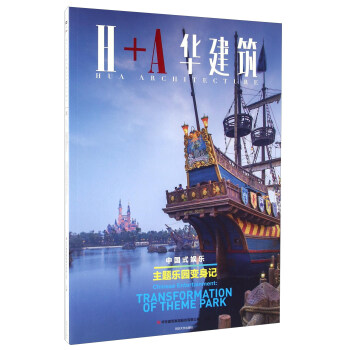具体描述
内容简介
苏州园林,是人工创造的自然山水美景。其主旨是为满足人们精神生活享受的一种物质环境,除了源于自然而又胜于自然的山水景色之外,还有与生活密切相关的建筑物,如厅堂、轩榭、馆斋。厅堂为全园活动中心,在厅堂、书房前后,多构筑曲廊,缀以山石,栽植花木,组成住宅庭院;厅堂周围和山池之间,缀以亭、榭、馆、斋,用蹊径和回廊贯通,组成一个可居、可游、可赏的园林整体。
《苏州园林品赏录》从品赏苏州园林造园艺术的角度,分吴门胜景、裁山得趣、分水清润、幽亭成翠、深院映碧、亭憩廊游文饰精到、绿影留人八个方面,为广大读者娓娓道来。 目录
吴门胜景/8
游园有静观和动观之分。亭、台、楼、阁,驻足静观,廊游以赏,是为动观;古典园林,遐迩闻名,小园大园,各具情趣。
裁山得趣/14
聚石叠山,裁山一角,说是假山,胜似真山;洞壑峰道,形式随变,掇石得趣,点石成景。
分水清润/24
开池理水,引水灌池,有聚有分,聚分得体;水湾、岛屿,山石、亭阁,环水而筑,景色互异。
幽庭成翠/30
厅、堂、轩、榭,馆、斋、楼、阁,造型精巧,布置灵活;历史悠久,文化丰富,古典味浓,艳美绝伦。
深院映碧/40
深深庭院,栽花植木,粉墙花影,艳美山林;环翠映碧,城市山林,源于自然,超越自然。
亭憩廊游/56
亭以止步,驻足静观;廊以行进,移步换景;亭廊结合,游憩相间,庭园美景,尽收眼帘。
文饰精到/78
匾额、对联,用词简练,名家手笔,点景精辟;家具陈设,典雅古拙,简、线、精、雅,风格独特。
绿影留人/90
入园看花,光景常新,布置自然,模拟山林;除尘闻香,清新空气,姿色双赢,丰富图面。 精彩书摘
石洞。有旱洞与水洞之分,通常多为一洞,残存的洽隐园小林屋,以水洞与旱洞相连,这是孤例。在苏州诸园中,洞的造型也普遍有蜿蜒如隧道状,其中一部分与前一种洞结合使用;狮子林的假山洞大多属于此,这与真实山洞相去甚远。洞的壁体构造,有用竖石,而以横叠者为多。洞门上部结构有几种形式,最简单的用横石条,或在石条上置湖石数块;其次是用不规则巨石搁置在门上;再次是用叠涩的方法。至于券式洞门,一般用不同形式石块构成,也有在券内侧加水平条石,以补助强度。环秀山庄的券,或为上下两层,或用大小券数个错综配合,表面有洞纹及小洞,外观自然,和山的真实情况较为接近,又能发挥较好的结构作用(图12)。
峡谷。是两山间的夹道,也称“谷”。在苏州园林中,唯环秀山庄的谷,峭壁夹持,如一线天,曲折幽静,有峡谷气氛。耦园东部假山的“邃谷”,是采取谷的形式,但两壁偏低,只能以一般山道看待。留园西部土山南端,亦有类似手法,但壁体更低,作为普通道路的路沿,又觉偏高,不相适应。
蹬道。假山无论高低,其蹬道的起点两侧,每用一高大,一矮小两竖石,以产生对比作用。竖石的形体、轮廓,以浑厚为好。蹬道转折处,其内转角亦用同样方法处理,凡遇平台,而后侧山势较高须叠石如屏障,如留园中部假山,有一处用斜立湖石,较为主动、合适。
石峰。苏州园林石峰,原以瑞云峰名闻遐迩,面今以留园冠云峰较为著名,且有三峰并列,组合成景,自成庭院(图13);峰后建楼,成为背景,衬托石峰轮廓;峰前凿池,植以睡莲,以水映石,周围栽植花木陪衬,托出石的形状,发挥其倩姿,是较好的处理手法。
土坡叠石。形式有三:一为多石散置,所用少见;二为组合成屏障式,错立于坡上,留园西部土山及沧浪亭山脊上,即是实例;三为不规则组合横列,成斜正错杂状,以拙政园雪香云蔚亭南侧和环秀山庄东北角为代表。至于狮子林西侧土山上建平行石岸三层,则属例外。 前言/序言
苏州市园林发展志 第一章 缘起与概览 Suzhou, a city etched with millennia of history, is not only famed for its silk and canals but is perhaps most enduringly recognized for its exquisite gardens. These miniature worlds, meticulously crafted and imbued with profound cultural meaning, are more than mere horticultural displays; they are living embodiments of philosophical thought, aesthetic ideals, and the harmonious pursuit of balance between humanity and nature. This comprehensive chronicle delves into the rich tapestry of Suzhou's garden heritage, tracing its evolution from nascent beginnings to its current status as a UNESCO World Heritage site and a global benchmark for garden design. The origins of Suzhou gardens are deeply entwined with the city's development as a center of political and economic power. As early as the Spring and Autumn Period (771–476 BCE), when the state of Wu established its capital in the region, rudimentary pleasure grounds began to appear. These early retreats, often associated with royal or aristocratic residences, served as spaces for leisure, hunting, and contemplation, laying the groundwork for the sophisticated aesthetic principles that would later define Suzhou's garden art. The subsequent Han and Jin dynasties witnessed a gradual refinement of these initial concepts. The introduction of Daoist philosophy, with its emphasis on naturalness and the pursuit of immortality, profoundly influenced garden design. Gardens began to incorporate symbolic elements, aiming to replicate or allude to the mythical landscapes of the immortals, fostering an atmosphere of tranquility and spiritual escape. A significant leap forward occurred during the Tang dynasty (618–907 CE). The flourishing economy and vibrant cultural exchange of this era fostered unprecedented artistic innovation. Suzhou, with its burgeoning prosperity and intellectual milieu, became a fertile ground for the development of more elaborate and refined garden styles. The use of artificial mountains, intricate water features, and carefully arranged pavilions began to take shape, transforming gardens from simple retreats into complex, multi-layered environments designed to evoke specific moods and experiences. The Song dynasty (960–1279 CE) marked a golden age for Chinese garden art, and Suzhou was at its zenith. Garden aesthetics matured, with a greater emphasis on subtlety, illusion, and the integration of architecture with the natural landscape. The concept of "borrowed scenery" (借景), where distant vistas are cleverly incorporated into the garden's composition, became a sophisticated technique. This period saw the creation of many iconic garden types, including those characterized by their exquisite rockeries, tranquil water elements, and meticulously pruned flora. The scholar-official class, a prominent feature of Song society, played a crucial role in patronizing and shaping these gardens, viewing them as extensions of their intellectual and spiritual lives. The Yuan dynasty (1271–1368 CE) saw a period of cultural fusion, with Mongol rule introducing new influences. While some gardens were adapted to new tastes, the core principles of Suzhou garden design largely persisted, demonstrating their inherent resilience and adaptability. It was during the Ming dynasty (1368–1644 CE) that Suzhou gardens truly achieved their most celebrated form. This era witnessed an explosion of creativity, with a proliferation of private gardens commissioned by wealthy merchants, officials, and scholars. The "literati garden" (文人园林) reached its peak, emphasizing intellectual and artistic expression over ostentatious display. These gardens became canvases for poets, painters, and calligraphers, with every element meticulously chosen for its symbolic resonance and aesthetic appeal. The principles of balance, asymmetry, and the evocation of natural scenes were further honed. Iconic gardens that remain celebrated today, such as the Humble Administrator's Garden and the Lingering Garden, trace their origins to this prolific period. The Qing dynasty (1644–1912 CE) continued the legacy of Ming garden artistry, with further refinements and the incorporation of new decorative elements. While the fundamental aesthetic remained, some Qing gardens leaned towards more opulent displays, reflecting the grandeur of the imperial court and the burgeoning wealth of the era. The influence of Western aesthetics began to appear in later Qing gardens, albeit in a subtle and integrated manner, demonstrating a unique capacity for assimilation. The tumultuous 20th century presented significant challenges to the preservation of Suzhou's garden heritage. Wars, political upheaval, and changing urban landscapes threatened these fragile ecosystems. However, a growing awareness of their cultural significance led to concerted preservation efforts, culminating in the inscription of nine of Suzhou's classical gardens on the UNESCO World Heritage List in 2000. This recognition underscored their universal value and initiated a renewed commitment to their conservation and meticulous restoration. This chronicle aims to provide a detailed exploration of Suzhou's garden legacy, moving beyond mere description to delve into the underlying philosophical principles, the evolution of design techniques, the social and cultural contexts that shaped them, and the enduring impact they have had on art, literature, and the very conception of beauty. 第二章 园林的空间构成与意境营造 The essence of a Suzhou garden lies not in its size but in its masterful manipulation of space and its profound ability to evoke a specific mood or "artistic conception" (意境). Unlike Western gardens, which often emphasize grand vistas and formal symmetry, Suzhou gardens are designed as intimate, multi-layered experiences, encouraging exploration and contemplation. 1. 借景 (Borrowed Scenery): Expanding Horizons One of the most ingenious techniques employed in Suzhou garden design is "borrowed scenery" (借景). This involves strategically framing and incorporating elements from the surrounding landscape – distant mountains, temples, pagodas, or even neighboring gardens – into the garden's own composition. By carefully positioning pavilions, windows, and openings, designers create the illusion of a much larger and more expansive space than the actual garden confines. This technique not only enriches the visual experience but also connects the garden to its broader context, blurring the boundaries between the artificial and the natural. 2. 障景 (Obscured Scenery): Guiding the Gaze In contrast to borrowed scenery, "obscured scenery" (障景) is used to control the viewer's perspective and create a sense of mystery and anticipation. Walls, screens, rock formations, or dense foliage are strategically placed to block immediate views, revealing the garden's elements in a sequential and deliberate manner. This creates a journey of discovery, where each turn or opening offers a new vista, a fresh detail, and a deepening appreciation for the carefully orchestrated unfolding of beauty. This element of surprise and gradual revelation is central to the contemplative experience of the Suzhou garden. 3. 叠山理水 (Rockery and Water): The Bones and Blood of the Garden At the heart of most Suzhou gardens lies the masterful interplay of artificial mountains (叠山) and water features (理水). These elements are not merely decorative but are fundamental to the garden's spatial structure and its ability to simulate natural landscapes. 叠山 (Rockery): The creation of rockeries is an art form in itself. Using stones, typically from Taihu Lake, skilled artisans assemble them to mimic the rugged beauty of natural mountains. The arrangement of rocks – their scale, texture, and form – is meticulously planned to create a sense of grandeur, intimacy, or wildness, depending on the desired effect. Rockeries often serve multiple purposes: they can define boundaries, create elevated viewpoints, house pavilions, or form hidden grottos and pathways, adding depth and complexity to the garden's topography. 理水 (Water Features): Water is considered the "lifeblood" of the garden, reflecting the sky, animating the space, and providing a sense of serenity. Ponds, streams, and waterfalls are carefully sculpted to emulate natural water bodies. The way water is contained, channeled, and its surface treated – whether still and reflective or rippling with movement – contributes significantly to the garden's mood. The reflection of pavilions and trees in the water creates a mirrored world, doubling the visual richness and fostering a sense of poetic beauty. The sound of water, whether a gentle trickle or a cascading fall, also plays a crucial role in the garden's auditory landscape, enhancing the overall sensory experience. 4. 建筑 (Architecture): Integration and Harmony The pavilions, halls, corridors, and verandas within a Suzhou garden are not imposed upon the landscape but are seamlessly integrated with it. Architecture serves to frame views, provide resting places, and delineate different functional areas within the garden. Each structure is carefully positioned to capture specific vistas, to offer shelter from the elements, and to complement the surrounding natural elements. The materials used, the colors, and the rooflines are all chosen to harmonize with the environment, ensuring that the architecture enhances rather than dominates the natural beauty. The use of verandas and covered walkways allows visitors to experience the garden in all seasons and weather conditions, fostering a continuous engagement with its ever-changing charm. 5. 路径 (Pathways): The Art of Circulation The pathways within a Suzhou garden are rarely straight and predictable. Instead, they meander, curve, and twist, guiding visitors through a series of carefully orchestrated experiences. This deliberate winding of paths serves to: Create anticipation: By not revealing the entire garden at once, the winding paths build suspense and encourage exploration. Enhance spatial perception: The changing perspectives offered by the curved paths make the garden appear larger and more complex. Encourage contemplation: The slow, deliberate pace enforced by winding paths allows for a more mindful and appreciative engagement with the garden's details. Reveal hidden vistas: Each bend in the path can offer a new and surprising view, a hidden pavilion, or a carefully placed rock formation. These pathways are often paved with meticulously selected stones, sometimes incorporating intricate patterns, further contributing to the garden's aesthetic appeal. 6. 意境 (Artistic Conception): The Soul of the Garden Ultimately, the spatial elements of a Suzhou garden are all orchestrated to create a profound "artistic conception" (意境). This is the intangible atmosphere, the emotional resonance, and the intellectual stimulation that the garden evokes. It is a carefully crafted blend of visual beauty, philosophical symbolism, and poetic suggestion. Suzhou gardens aim to transport the visitor, to offer a refuge from the mundane world, and to inspire reflection on nature, art, and life itself. This is achieved through the careful selection of plants, the symbolic meaning of rocks and water, the architectural design, and the overall harmonious integration of all these elements. The experience is not passive; it actively engages the visitor's imagination and emotions, creating a deeply personal and memorable encounter. 第三章 典型园林的空间艺术与意境解读 (This section would then go on to detail specific, well-known Suzhou gardens, analyzing their unique spatial arrangements, characteristic features, and the specific artistic conceptions they aim to evoke. For example, one could discuss:) 3.1 拙政园 (Humble Administrator's Garden): The Poetic Landscape 拙政园, a masterpiece of Ming dynasty design, is renowned for its expansive central pond and the delicate balance between its water features and surrounding architecture. Its division into distinct zones – the eastern part with its lush vegetation and winding paths, the central part dominated by the vast mirror-like pond and the iconic Lotus Pavilion, and the western part with its more intimate courtyards and residential buildings – showcases a masterful approach to spatial sequencing. The "borrowed scenery" of the distant pagoda is cleverly integrated, extending the visual horizon. The design emphasizes the tranquility and beauty of nature, evoking a sense of pastoral elegance and quiet contemplation, befitting its name. The various pavilions are strategically placed to offer different perspectives of the water and the surrounding greenery, each view a carefully composed poem. The rockeries, though not as prominent as in some other gardens, are artfully integrated to define pathways and create subtle topographical changes. The overall mood is one of serene detachment, inviting visitors to shed the cares of the world and immerse themselves in the gentle rhythm of the landscape. 3.2 留园 (Lingering Garden): The Masterpiece of Variety 留园, a Qing dynasty jewel, is celebrated for its incredible diversity of scenes within a relatively compact area. Its ingenuity lies in its ability to create a succession of vastly different micro-landscapes. From the imposing rockeries and opulent halls of the northern section to the serene water features and delicate pavilions of the southern part, the Lingering Garden offers a journey through a multitude of moods and aesthetics. The intricate network of covered walkways, adorned with exquisite latticework and calligraphy, not only connects different parts of the garden but also serves as a dynamic element, revealing curated glimpses of the scenery as one moves. The "borrowed scenery" here is more subtle, often incorporating the shapes of distant hills into the undulating lines of its rock formations. The garden masterfully employs techniques of illusion and surprise, with unexpected openings leading to hidden courtyards or sudden shifts in architectural style. The artistic conception here is one of endless fascination and subtle beauty, encouraging visitors to linger and discover new delights at every turn. 3.3 狮子林 (Lion Grove Garden): The Sculptural Spectacle 狮子林, originally a Zen Buddhist monastery garden, is famed for its dramatic and intricate rockeries, which resemble a labyrinth of lion-like formations, hence its name. Designed during the Yuan dynasty and later refined, its defining characteristic is the extensive use of artificial mountains crafted from porous limestone. These rockeries are not merely decorative but form a complex, multi-leveled landscape with caves, tunnels, and bridges, inviting exploration and embodying a sense of wildness and theatricality. The water features here are more subservient to the rock formations, often appearing as ponds or streams winding through the stony terrain. The architecture, though present, is secondary to the sculpted landscape, serving as resting points within the rocky maze. The artistic conception of Lion Grove Garden is one of playful grandeur and intellectual challenge, evoking a sense of awe and wonder, akin to navigating a mythical realm. 3.4 网师园 (Net Master's Garden): The Intimate Retreat 网师园, a gem of the Qing dynasty, exemplifies the scholar-official's ideal garden – a place of quiet contemplation and refined aesthetic appreciation. It is characterized by its exquisite craftsmanship, meticulous attention to detail, and a profound sense of intimacy. The garden is divided into a residential area and a garden area, each seamlessly connected. The garden itself is a symphony of water, rock, and flora, with a central pond reflecting the surrounding structures and vegetation. The use of "borrowed scenery" is subtle, with carefully framed views of the sky and the surrounding trees. The architectural elements are elegant and understated, designed to harmonize with the natural surroundings. The pathways are winding and lead to secluded nooks and tranquil corners, inviting solitary reflection. The artistic conception of Net Master's Garden is one of quietude, refinement, and intellectual engagement, offering a refuge for the scholar seeking solace and inspiration in the beauty of nature. Concluding Remarks The Suzhou gardens are not static monuments but living testament to a profound and evolving relationship between humanity and nature. This chronicle has sought to illuminate the intricate artistry, philosophical underpinnings, and enduring legacy of these unparalleled landscapes. They continue to inspire, to educate, and to offer a timeless sanctuary for the soul, a profound reminder of the enduring power of beauty and the art of living in harmony with the world around us.
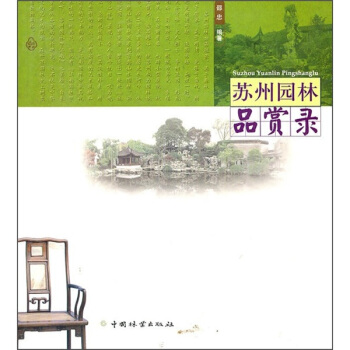




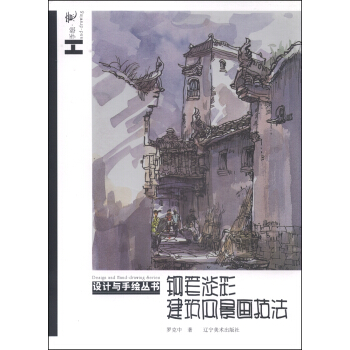



![中华人民共和国国家标准(GB/T51141-2015):既有建筑绿色改造评价标准 [Assessment Standard for Green Retrofitting of Existing Building] pdf epub mobi 电子书 下载](https://pic.tinynews.org/11940975/579f2021Naeeaa3a3.jpg)

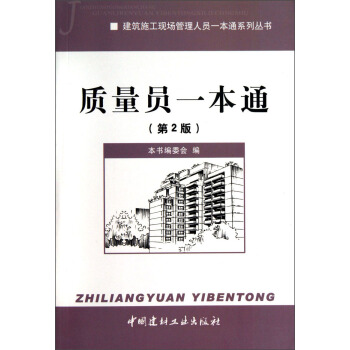

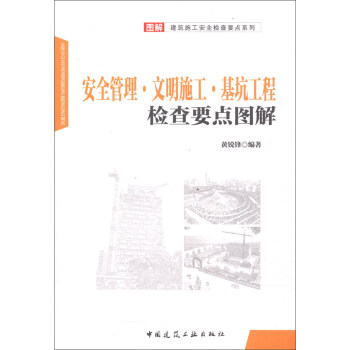
![美国建筑师协会2010-2012获奖作品集 [AIA 2010-2012 Designs For the New Decade] pdf epub mobi 电子书 下载](https://pic.tinynews.org/11028534/rBEIC0_6nXAIAAAAAABFnhkw-7YAAD0DgDP8xQAAEW2247.jpg)
![混凝土的可见与不可见裂缝 [The Visible and Invisible Cracking of Concrete] pdf epub mobi 电子书 下载](https://pic.tinynews.org/11313965/rBEhWFI-vs4IAAAAAAJmVD9H5MMAADYywHbeUsAAmZs797.jpg)



